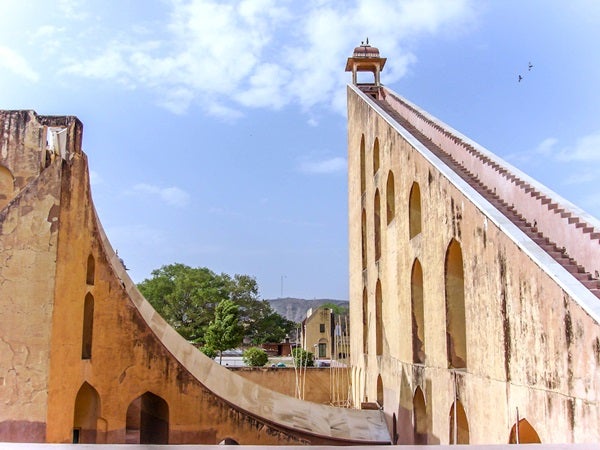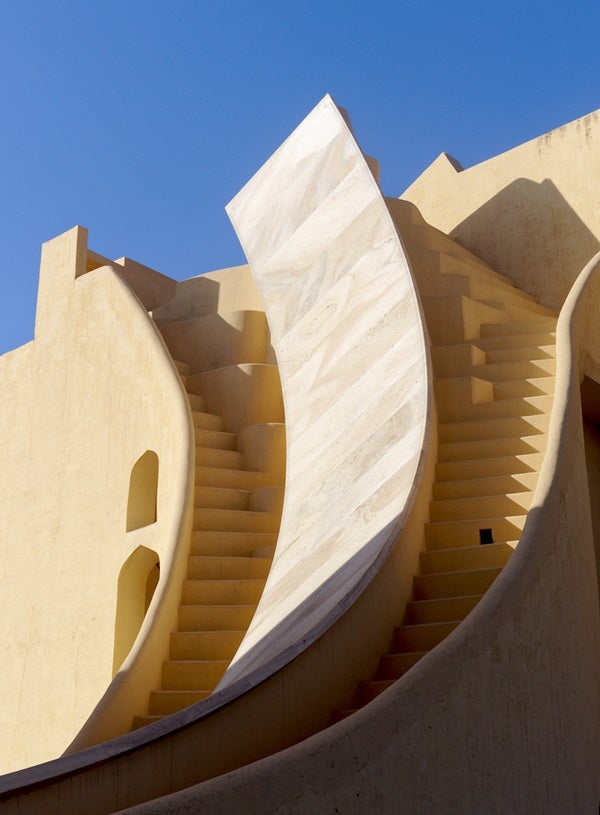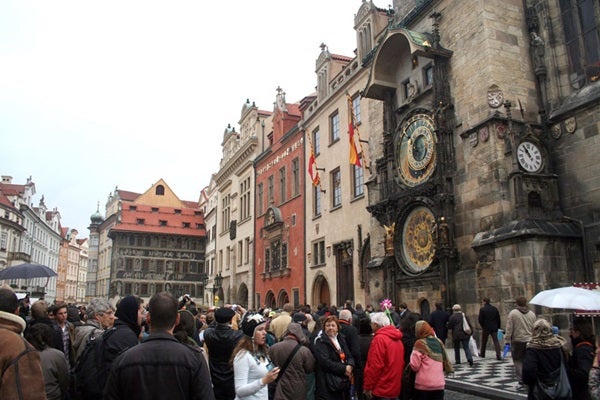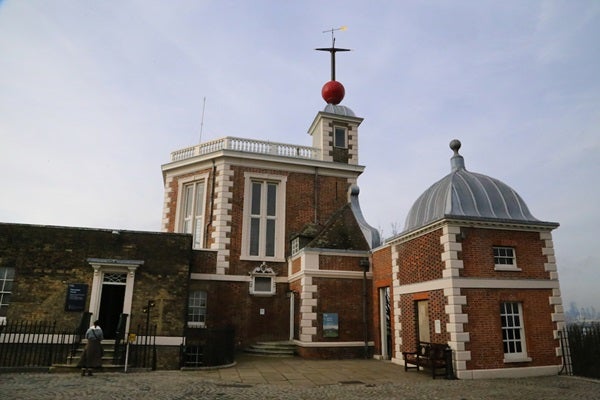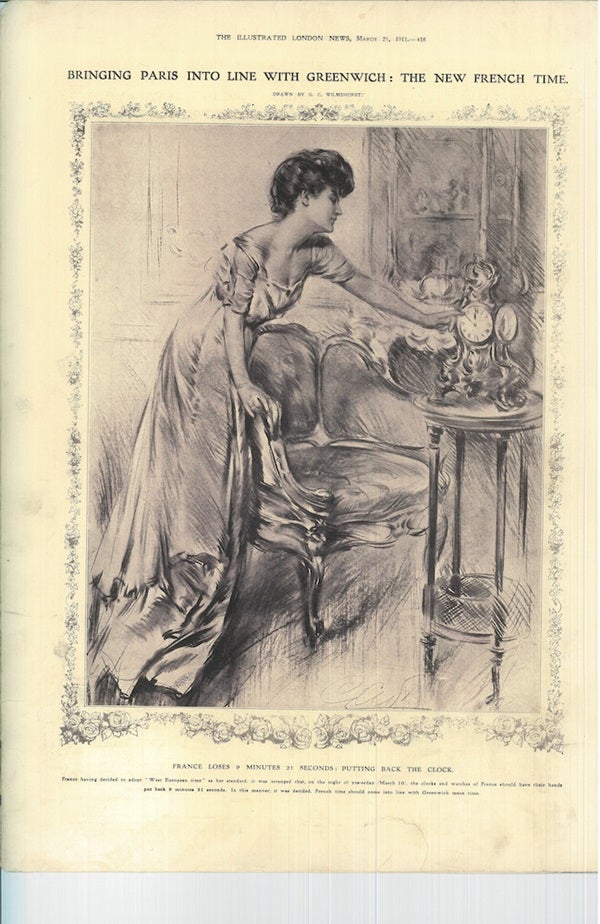Time and astronomy are inseparable. Humans have been using the motions of the stars, Sun, and Moon for thousands of years to regulate their hunting, crops, religion, and lives in every way. And as astronomy developed, so did the need for more precise timekeeping.
There are many ways to ask, “What is the time?” Astronomers can use solar standard time, mean solar time, sidereal time, Universal Time, or Julian Date and its many modified forms. Astronomers describe three different types of twilight, the equation of time, 24 time zones, and an astronomical day. Understanding these different “times” gives us a better idea of our relationship with the sky above, and the spinning Earth on which we live.
The beginning of time
Early civilizations developed two types of calendars. The oldest is lunar in nature. It might seem more logical for the Sun to have been the first timekeeper, but archaeologists have found bones of mammoths and other animals dating over 20,000 years old that appear to have carvings recording phases of the Moon. During that period of human history, hunters tracking game needed to know how long they had been gone from their camp, making the Moon the obvious choice to track the passage of time.
It would be millennia before the Sun replaced the Moon in our modern calendar. This is because Earth and the Moon are involved in a cosmic mashup that is difficult to untangle. Most ancient cultures heralded the beginning of the month when the thin crescent or “New Moon” could be seen after sunset. There are 354 and a fraction days in a lunar year with 12 lunar months. Earth, however, revolves around the Sun every 365.242 days. While this was not a problem in a purely ceremonial or religious calendar, trying to mesh these two calendars was impossible.
The solution to this issue was proposed by Sosigenes of Alexandria, Cleopatra’s court astronomer and arguably the most influential astronomer in all of history. Julius Caesar employed Sosigenes to fix the old Roman lunar calendar. By Caesar’s time, the lunar calendar had become so out of sync with the seasons that it required a decree from the emperor to remedy the situation. At Sosigenes’ suggestion, the old lunar calendar was replaced with one which used only the Sun to delineate the year. The Moon was left to drift through the 12 months of Caesar’s new calendar.
This Julian calendar also implemented leap years, adding one extra day every four years. But this was not quite a perfect fix, as the last fraction of a day in a year is slightly less than one-quarter of a day. By the 16th century, the Julian calendar was also out of step with the seasons. This led Pope Gregory XIII to implement updates in 1582 that dictated leap years be skipped on years divisible by 100 except when divisible by 400. So while 1900 was not a leap year, 2000 was. Two thousand years later, the whole world still uses the modified calendar of Sosigenes.
Keeping time
Cultures the world over developed methods for tracking the hours using water clocks, hourglasses, and sundials, often for the purpose of scheduling religious rituals. Of course, there were limitations to these methods. Water froze in the winter, hourglasses needed to be turned over, and sundials were of no use after sunset.
Around the year a.d. 1000, mechanical devices that could ring bells to tell time began to appear in western Europe. In fact, some think the word “clock” derives from the French, cloche, meaning bell. These early mechanisms had no dials and only rang bells. Within a few hundred years, dials were added to visually show the hour. By the 13th century, astronomer monks were creating complex movements with dials that had an hour hand and displayed Moon phases, the solstices, and equinoxes, and more.
In the Middle Ages, knowing the hour was sufficient for everyday activity. Words like moment meant the passage of 15 minutes rather than a blink of an eye. As astronomy advanced, however, more precision was needed. This came courtesy of the regular motion of swinging pendulums, which Galileo studied at the beginning of the 17th century. In 1657, the Dutch astronomer Christiaan Huygens applied for a patent for a clock using the regular oscillation of a swinging pendulum to regulate the passage of time. Clocks were now accurate enough to not only justify both an hour and minute hand, but a second hand as well.
Navigating by time
Science, technology, and commerce often complement each other. In the 17th century, the three came together to tackle the difficult challenge of determining a ship’s longitude at sea.
In 1676, at the newly built Greenwich Observatory located outside of London, two unique clocks with 13-foot-long (4 meters) pendulums were installed. These clocks were accurate to within 10 seconds over the course of a day or better, dramatically increasing astronomers’ ability to make accurate observations.
The first astronomer royal, Sir John Flamsteed, wanted to know if Earth’s rotation was isochronical. In short, did Earth spin on its axis at a constant rate? With the new clocks, Flamsteed showed that the spinning of our planet was in fact constant. This provided the first link in the efforts to solve the longitude problem.
By the 18th century, navigators were using portable clocks driven by wound springs that could accurately maintain Greenwich time. By comparing them to their observed local solar time, they could determine their longitude hundreds of miles from land-based observatories.
Syncing time
As the 19th century neared, clocks and pocket watches had become common and fashionable. But how did you set them? With the garden sundial! When travel was by foot or horse, differences in “local” times were negligible and did not present a problem. But with the arrival of trains, all of this changed, and astronomy came to the rescue once more.
For every 15° of longitude either west or east of a designated meridian, the local solar time decreases or increases by one hour. That means for each degree of longitude, time changes by four minutes. If there is a sundial that shows noon at Greenwich, it would be 11:40 a.m. by a sundial in Oxford. Across Great Britain, there is a 30-minute difference in time. This was hard enough for railroads in a small country where every town adjusted its clocks to the local sundial. It was worse in North America, where time zones spanned three and a half hours! Each town used local sundials to set their clocks, while each railroad had a different standardized time for their published timetables. This made it almost impossible to have rail schedules that made any sense at all.
To solve this, astronomers divided the globe into 24 time zones. The starting point for these time zones was based on the meridian defined by specific observatories that made noon day observations. In England, it was the Greenwich Observatory, France used the observatory in Paris, and the U.S. used the Naval Observatory in Washington, D.C.
As telegraphs encircled the globe, it became possible to transmit time signals. In 1833, the Greenwich Observatory installed a bright red “time ball” mounted to a mast on the observatory roof. The ball dropped at precisely 1 p.m. every day, allowing ships on the River Thames to set their chronometers in reference to the observatory clock. By 1850, Astronomer Royal Sir George Airy was interested in “electrifying” time. Airy felt it was a national duty to provide Greenwich time to the nation. Daily time signals were being sent across England by the 1870s.
In America, astronomers also began to distribute time. The U.S. Naval Observatory sent occasional time signals as early as 1865. By 1869, the Allegheny Observatory near Pittsburgh began a time service for an area spanning New York, Chicago, and beyond. The signal was sent to railroads and jewelry stores. Jewelers placed connected clocks in their windows where customers could set their watches. Allegheny and other observatories charged fees to distribute these time services, allowing them to fund important astronomical research. Time really was money.
By the late 19th century, the situation had taken on international dimensions. In October 1884, delegates from around the world gathered in Washington, D.C., at the International Meridian Conference. The goal was to determine “a common zero of longitude.” Each of the 24 world time zones would be reckoned from one prime meridian and standardized to mean solar time. Thus, the beloved sundial was relegated to gardens and church cemeteries.
The meridian of the Greenwich Observatory was chosen as the zero point for the world’s time zones. The decision was made in part because of Greenwich’s historical association with timekeeping, and the fact that the United Kingdom still dominated maritime commerce. Not all of the 35 delegates were happy. In particular, the French insisted the prime meridian not be tied to any one nation and should be neutral. French clocks continued to use time issued from the Paris Observatory. They remained 9 minutes and 21 seconds ahead of Greenwich Mean Time (GMT) until March 10, 1911. Apparently, even time can be political.
Counting the days
Astronomers thrive on precision, and calendar dates can often be cumbersome and confusing. To be more precise, observations and events are often recorded by their Julian Date. The Julian period was the brainchild of the 16th century historian Joseph Justus Scaliger and begins on Jan. 1, 4713 b.c. This date is one where several cycles coincide: the 28-year solar cycle in the Julian calendar, after which the days of the year fall on the same days of the week; the 19-year Metonic cycle, when lunar phases recur on the same days of the year; and the 15-year indiction cycle, the tax cycle of the Roman Empire, which was another method for recording dates.
When John Herschel adapted Scaliger’s idea for astronomical use in 1849, he chose noon as the zero hour for the current Julian Period, thus avoiding a date change during nighttime observations. Julian Date is then simply the number of days that have passed since noon on Jan. 1, 4713 B.C.
In 1957, the Smithsonian Astrophysical Observatory created a Modified Julian Date, which begins at midnight GMT, Nov. 17, 1858. This made the day count considerably smaller and more manageable for early computers.
Time and astronomy are rooted in the way we order our lives. Ancient sky watchers looked to the sky to bring order to their world, and we still use astronomical cycles to set the very patterns of our lives. Astronomers have given these patterns order and precision in an effort to answer that age-old question: “What time is it?”

